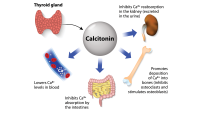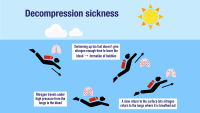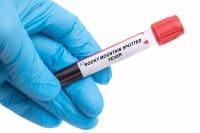A team’s quick actions ensure a positive outcome.
Takeaways:
- After a patient is admitted with gestational hypertension, she experiences an acute change in mental status.
- Suspecting amniotic fluid emboli, you call the rapid response team.
- Immediate treatment to optimize hemodynamic function, cardiac output, respiratory support, combined with aggressive management of volume and coagulopathy, enhances maternal outcome.
Lynn Thompson* is admitted to your unit with gestational hypertension and labor induction. When her membranes spontaneously rupture, she experiences an acute change in mental status. Your assessment reveals that Ms. Thompson is cyanotic; her HR is 154 bpm, respiration rate 38 breaths per minute, blood pressure 60/35 mmHg, and blood oxygen level 82% and steadily declining. Fetal heart rate tracing shows a spontaneous uterine hypertonus and terminal bradycardia. Ms. Thompson’s condition rapidly declines with hypotension, hypoxemia, and unresponsiveness. Suspecting amniotic fluid emboli (AFE), you activate the rapid response team.
Taking action
Ms. Thompson delivers her baby by emergency low-transverse cesarean section in the OR. After delivering the placenta, Ms. Thompson continues to decompensate with a pulseless wide complex ventricular tachycardia. The OR nurse calls a code blue and initiates CPR. After Ms. Thompson is intubated, a stat transesophageal echocardiogram (TEE) reveals fibrinous material in her heart—AFE. This rare condition occurs where amniotic fluid, fetal cells, tissue, and other debris enter the patient’s bloodstream, resulting in a rapid systemic inflammatory, anaphylactic-like reaction.
The obstetric provider team orders a massive transfusion protocol as Ms. Thompson’s hemoglobin drops to 4 g/L and she develops disseminated intravascular coagulation. Ms. Thompson receives multiple blood products, including fresh frozen plasma, pooled platelets, cryoprecipitate, packed red blood cells, and uncrossed red blood cells. The OR nurse notes that the patient’s abdomen is distended. When the trauma surgeon reopens her abdominal incision, blood rushes out. The surgeon stabilizes the bleeding.
Education and follow-up
The altered hemodynamic response associated with classic AFE isn’t completely understood and involves a complex sequence of reactions. Patients experience an anaphylactic-type reaction when the amniotic fluid enters the circulatory system. The terms AFE and anaphylactoid syndrome of pregnancy are used interchangeably due to ongoing debate about the condition’s etiology. Some theorize a cascade of events from an emboli blockage in the pulmonary system, whereas others hypothesize a proinflammatory response occurring with the release of cytokines and arachidonic acid metabolites. Breech of amniotic fluid occurs in between one and 12 patients for every 100,000 deliveries and is benign in most pregnancies.
Immediate treatment to optimize hemodynamic function, cardiac output, respiratory support, combined with aggressive management of volume and coagulopathy, enhances maternal outcome. Delivery of the fetus may be indicated to improve maternal cardiac output by releasing a vena cava or aortocaval obstruction. Neonatal outcome is directly related to maternal collapse.
Outcome
Ms. Thompson stabilizes and is transferred to the surgical intensive care unit (SICU). Her abdomen remains open with a wound vac in place. A repeat TEE reveals a large clot in the inferior vena cava, right atrium, and right ventricle, which the surgeon removes. After Ms. Thomson stabilizes overnight, she returns to the OR for an exploratory laparotomy, abdominal washout, and wound vac removal.
Due to the team’s quick actions, the baby was discharged from the NICU at 9 days and Ms. Thompson returned home 39 days after she delivered the baby.
*Name is fictitious.
The authors work at Thomas Jefferson University Hospital in Philadelphia, Pennsylvania. Elizabeth Avis is a rapid response nurse. Gina Gardingan a labor and delivery and high-risk antenatal clinical nurse educator.
References:
Barnhart ML, Rosenbaum K. Anaphylactoid syndrome of pregnancy. Nurs Womens Health. 2019;23(1):38-48. doi:10.1016/j.nwh.2018.11.006
Clark SL. Amniotic fluid embolism. Obstet Gynecol. 2014;123(2 Pt 1):337-48. doi:10.1097/AOG.0000000000000107
Combs CA, Montgomery DM, Toner LE, Dildy GA. Society for Maternal-Fetal Medicine special statement: Checklist for initial management of amniotic fluid embolism. Am J Obstet Gynecol. 2021;224(4):B29-32. doi:10.1016/j.ajog.2021.01.001
Schröder L, Hellmund A, Gembruch U, Merz WM. Amniotic fluid embolism-associated coagulopathy: A single observational study. Arch Gynecol Obstet. 2020;301(4):923-9. doi: 10.1007/s00404-020-05466-w
Shamshirsaz AA, Clark SL. Amniotic fluid embolism. Obstet Gynecol Clin North Am. 2016;43(4):779-90. doi:10.1016/j.ogc.2016.07.001


















